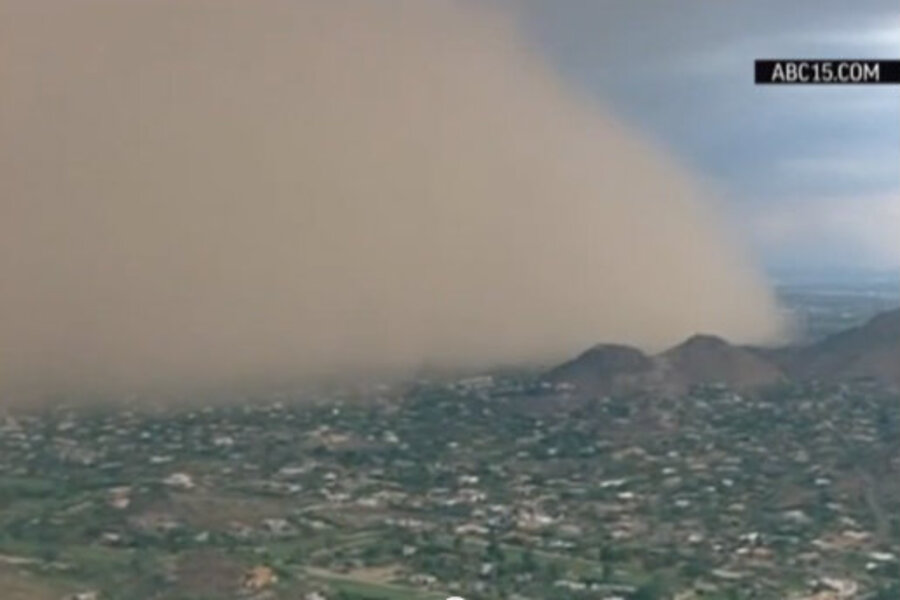Phoenix haboob: massive dust storm rolls into Arizona
Loading...
An enormous dust storm called a "haboob” rolled into Phoenix on Monday evening, as seen in ethereal photographs shared on social media that night.
No injuries were reported, though the storm did appear to have downed power lines and uprooted trees, the Weather Channel said.
In the images, a massive cloud slips over the Arizona horizon, swallowing up both the desert-red sunset and the seemingly tinker-toy-sized homes below.
Arizona's monsoon season runs from mid-June and to the end of September and brings with it the big thunderstorms that churn up "haboobs,” the Arabic word for the dust storms common to the world’s deserts. The storms happen when thunderstorms create downdrafts, often called downbursts, that send aloft loose dust from the ground. The sediment is buoyed upward as a wall that moves in front of the storm, like illusionist smoke preceding a wizard’s army.
At its height, the Phoenix haboob’s wind gusted at more than 60 miles per hour, the Weather Channel said. Visibility in the area also dropped below a quarter of a mile. Parts of the Phoenix region experienced rain as the following storm moved in, with some of the area under flood watch.








